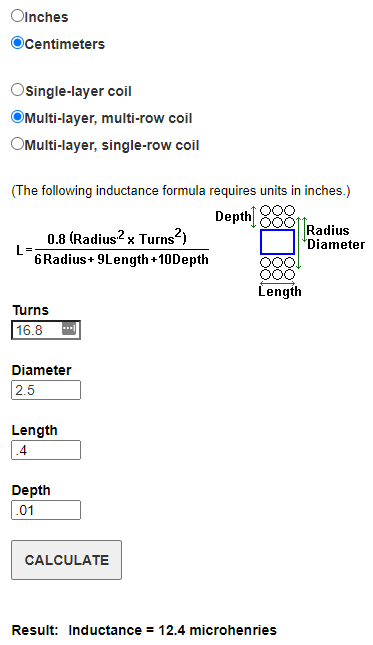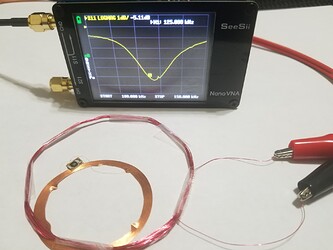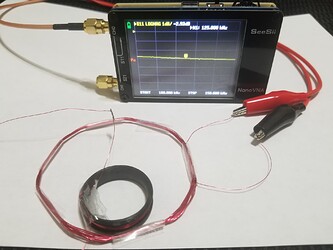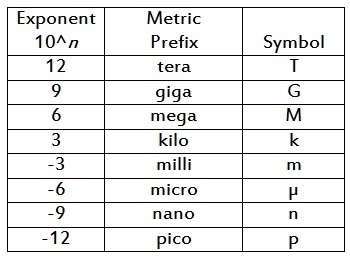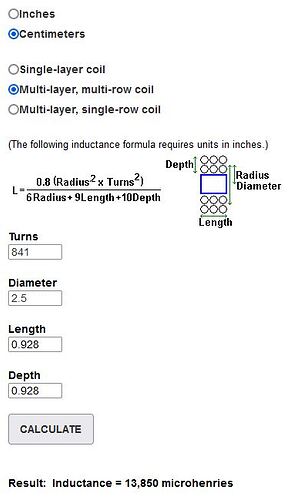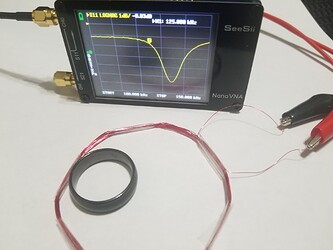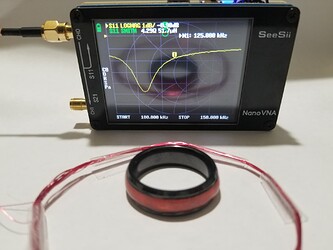I was interested in purchasing the DT Magic Ring but they dont make it in my size. I contacted DT and they informed me the larger sizes dont sell much and they have no intention of making even larger sizes. So, I decided I would try to make my own.
The chip is a T5577 (given for chip, but going to state anyways, frequency 125khz) taken from a melted down card. I was able to read an write to it once removed and using its original antenna. Different cards had slightly different original antennas, even though they all used the T5577 chip. They were all single layer style antennas ranging from:
Coil outer diameter: 43-37mm
Coil Length: 3.5-5mm
Wire diameter: 0.03-0.04mm
The ring I am trying to make has the following data points:
T5577 measured capacitance: 0.175nF
Ring outer diameter (coil inner diameter): 25mm
Ring channel width (coil length): 4mm
Wire gauge for antenna: 32awg or 0.2mm (enameled coated magnet wire)
Inductance: ???
Number of Turns: ???
Extra measurements I took that may be useful (I do not own nor have access to an oscilloscope):
Diode: 2.19V
Ohms reads open line
Using the calculator here the calculated Inducatnce (L) given the above data is 0.009263651µH (9.263651nH).
Using this calculator and the above data the Number of Turns is listed as 2, which doesnt sound correct, but more importantly doesnt read.
Through other documentation I found (only have the pdf, cant find link), it looks like the inductance may be between 4.8-5.0mH which equates to 321 turns, which also doesnt sound right and would stack WAY above the ring.
Using yet some other documentation, I found the documented inductance to be 330uH. This led to 90 turns, which is near the limit of the ring channel I have, and I could successfully read and write, though only from about an inch away. I have purchased ring that will read from almost 3 inches, so I think there is still something not quite right.
I played near this 90 turn range from 80 (which didnt read) to 125 (which was a little excessive for the ring size and stopped reading).
The issue here was it would work when I wasnt wearing it but would stop reading when it was on my finger. The commercially produced ring worked on my finger at about 1 inch, so it seems there is a factor about the body I may also be missing.
How can I determine the inductance and/or number of turns needed? I would greatly appreciate if someone could walk me through the calculation.
If this is not sufficient to calculate, could you please also let me know what other data you need?
